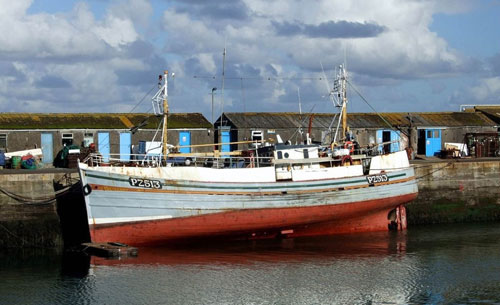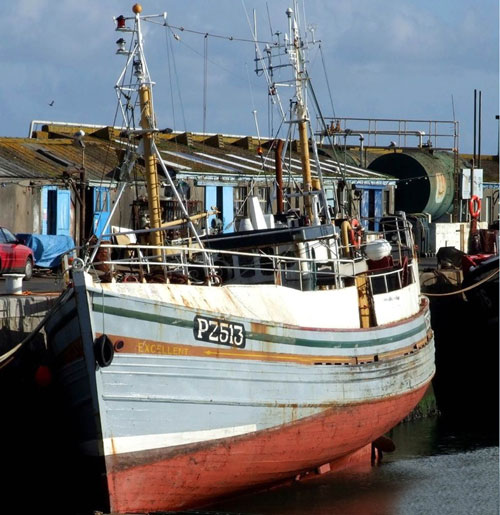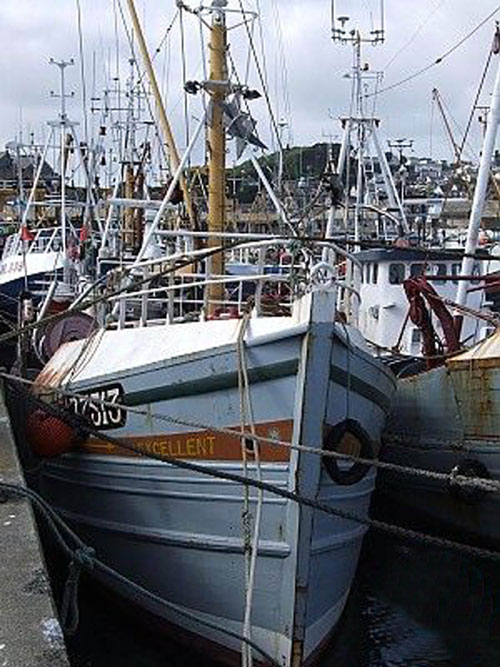ONE of the UK’s oldest fishing boats – which may have been used in the legendary ‘Heroes of Telemark’ raid in World War 2 – is on sale for £1.
The 75ft Excellent, built in 1931, was based in Scotland for part of the war and used for “clandestine” operations in Norwegian waters.
A Glasgow University historian said it was “absolutely possible” Excellent was among those that helped in the successful sabotage of the Nazi’s atom bomb facility in Norway.
The wooden boat is the oldest registered British fishing vessel in her class – over 12 metres – but is up for sale for less than many people pay for a loaf of bread.

The price reflects the fact that the veteran of the seas needs restoration work.
The current owners, fishing firm Stevensons Newlyn, based in Newlyn, Cornwall, have put Excellent up for sale on a UK shipping site.
In an advert it states: “The owner is willing to give this vessel to someone who might restore her, for the sum of £1.”
The further details section on the online ad lays out the glorious history of the vessel.
“Her wartime service has still to be fully researched but is believed to include clandestine trips to Norway.
“She was requisitioned by the Admiralty, for which the Stevenson family received £35 a month in return.
“During the war she was used as an Admiralty motorised fishing vessel in Scottish waters.”

It adds: “Excellent is now the oldest over 12 meter British fishing vessel that is still fishing and registered by DEFRA.
“She served as part of the Stevenson’s fleet for over 70 years. She has had three major engine changes and has been rebuilt twice.
“Excellent is a very good example of a vessel which has been progressively modernised to enable her to remain commercially viable.”
Dr Phillips O’Brien, Reader in history at Glasgow University, said “it is absolutely possible” the boat was used to help with the Norwegian heavy water sabotage operation.
The daring operations to prevented the German nuclear energy project from creating an atomic bomb provided the story for the 1965 film The Heroes of Telemark starring Richard Harris and Kirk Douglas.
“Norway is important for the German Atomic project,” said Dr O’Brien.
“The Norwegian coast is incredibly long. The Germans didn’t patrol the whole thing. You could get aid into the Norwegian resistance.
“They would send vessels out to look like fishing boats. They would bring in military aid and people.”

Dr O’Brien continued: “Most of the coast is protected by aircraft. If aircraft flew over it would think it was just a Norwegian fishing boat.
“If they brought in people by boat or supplies that is the type of boat it would come in on.”
Other legendary exploits during operations in Norway during the war include those of Patrick Dalzel-Job, a the Scottish World War II Naval Intelligence officer and commando.
He is said to be the inspiration for Ian Fleming’s James Bond character and crossed the North Sea several times to perform his “most secret” operations.
He was active in Norway during the war and in 1940 was involved in the evacuation of 5,000 people from a small Norwegian town Navik before it was bombed by the Luftwaffe.
Dalzel-Job, whose son Iain, lives in Edinburgh, mobilised 200 fishing boats to remove civilians from the area before the bombing run began.
He was an accomplished ski-jumper, parachutist, a diver and a safe-blower who, after his exploits in Norway, was seconded to work for Ian Fleming.
Spies observed Germans from harbours and dockside buildings as well as inconspicuous vessels like the Excellent.
In his book on the subject historian Jerome Preisler explained shipyard workers would undertake the dangerous work of spying on the Nazis.
He wrote: “Some hid themselves at frequently travelled transit routes along the shore, tracking the movements of German vessels through binoculars and telescopes.
“Norwegian ship watchers also used a fleet of sixteen wooden fishing trawlers to ply the fjords and inlets near German garrisons and collect critical information about their activities.”

